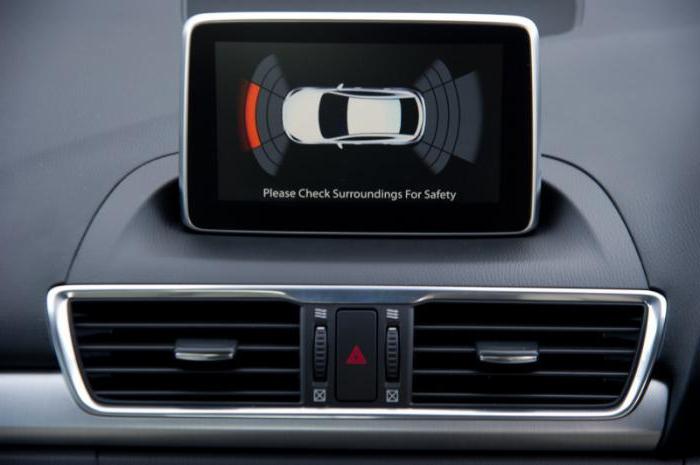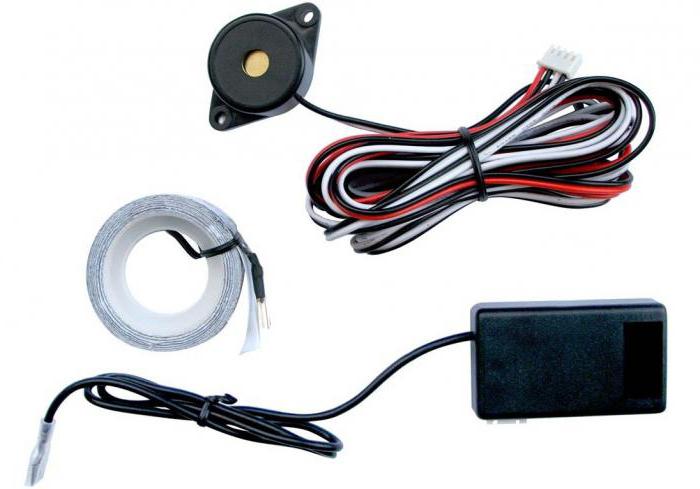The optional equipment of cars is gradually becoming the status of mandatory equipment. This does not happen with all devices, and mainly in middle-class models and above, but in subsequent years this process will most likely only increase the intensity. Parktronics can be confidently put in a number of options that have already become a necessity. Not only traditional configurations, but also alternative versions are in demand. For example, an electromagnetic parking radar, due to its advantages, is a serious competitor to ultrasonic models. Ease of installation and functionality are the main factors due to which this system has become popular.
What is the peculiarity of electromagnetic models?
In essence, this is the same classic parking radar, but instead of sensors, metallized tapes are used. Actually, their electromagnetic effect determined the name of the systems. The detector material is mounted on the bumpers without the need for special holes, as is the case with conventional parking sensors. To understand the principle of interaction between the system and the driver, you should remember what a parking radar is in a traditional version. This is a device that detects radiation from approaching objects using sensors and sends the corresponding signals to the onboard computer based on this information. At the last stage, the driver is notified through the speaker system, indicator lights or display.
A similar principle of operation is supported by models without sensors, but the approach to the primary hazard indication is somewhat different. During operation, electromagnetic parking radars propagate wave radiation and, based on resistance signals, also fix approaching objects.
Varieties of parking sensors

Still, the main division involves the classification of ultrasonic and tape devices. Models of the first type are considered to be better and more thorough execution of the principle of parking sensors. Sensors work effectively regardless of external influences, providing high information content. And this is not all the advantages that traditional parking sensors have. Preferring an ultrasonic or electromagnetic radar is an ambiguous question, but it can be answered if you initially decide on the requirements for the system. If you need signal reliability and the range of perception of obstacles, then you should choose ultrasonic models. If the interests of economy and the availability of installation come first, it is better to turn to electromagnetic devices. But this is a general comparison, since there are many other nuances of operation. As for the varieties in the class of electromagnetic models, they mainly differ in the way the signal is transmitted from the tape to the on-board computer and the approaches to notifying the driver.
Device Options

The composition of the kit is quite narrow, but functional. The basis is an electronic unit that performs the processing of the incoming signal, a metallized tape and warning equipment. Subsequently, these components form a system that more likely resembles not a radar, but a sonar. However, not everything is clear here either. The fact is that there are configurations involving wireless signal transmission from the tape. Such models can be called radars, but most often there is a wire-type electromagnetic parking radar in which the electronic unit communicates with the active elements via cable. Separately, it is worth considering the means of indication. The basic equipment rarely provides a wide selection of such equipment, but if desired, you can get additional warning systems. So, if in the standard the user receives only a buzzer for noise indication, then in order to expand the functionality, it is possible to provide the possibility of informing via a liquid crystal screen or LED backlight.
Installation Nuances
Installation is one of the main advantages of electromagnetic systems. Only a few actions are required from the user. First of all, the bumper is prepared - it is necessary to provide for the possibility of sticking the tape under the bottom or from the back. When all work surfaces have been cleaned, you can proceed to the direct bonding of the metallized tape. At the next stage, electromagnetic parking radars are connected to the electronic system. The most common is the wired method, so you should foresee the possibility of carrying the cable through the trunk to the passenger compartment in advance. Of course, for convenience, you can use more modern wireless systems, which are connected by pressing a few keys on the control panel, but such systems are much more expensive.
The benefits of electromagnetic parking sensors
The advantages of electromagnetic parking sensors, first of all, include the ability to fully cover the rear of the car. If the sensor operates, albeit with a long range, but in a limited perimeter, then the tape forming an elliptical electromagnetic field practically does not leave “dead” zones. In addition, electromagnetic parking radars are highly sensitive. But the value of this factor can go both in plus and minus. On the one hand, a sensitive sonar will not let an approaching object closer to a critical distance without warning, but on the other hand, it will also respond to the tiniest interference, which, in essence, is not dangerous.
Cons of parking
The disadvantages of parking systems of this type include a small detection distance and low information content. The fact is that ultrasonic devices, thanks to the point arrangement of the sensors, allow not only notifying the driver about approaching the object, but also indicating the direction from which the threat is observed. In turn, electromagnetic parking radars alert the user without specifying the area of the car to which a third-party object is approaching. Also, many drivers note the unstable operation of the devices during rain and snow, but in such conditions, false alarms can occur.
Model Reviews
Until recently, parking radars were available only as an option and were developed directly by car manufacturers. Particular successes in this direction were the German company Audi and Mercedes. But gradually the automotive market began to replenish and separate devices. One of the most successful tape versions of the sonar today is the electromagnetic parking radar Airline APS-ML-03, which provides an example of balanced performance. This model covers an approximation range of 10 to 70 cm and, in the event of a foreign object being detected, notifies the driver through a display and speaker system.
The U-301 model is also interesting, in which the maximum distance of action is already 90 cm. Users note the high sensitivity of the device and ease of installation. The disadvantages of the system include a modest configuration. An electronic unit, tape and buzzer are the entire kit that comes with an electromagnetic parking radar. Reviews also emphasize the stability of the signal during transfers from tape to the main unit.
Conclusion
Manufacturers of automotive accessories try to offer functional, productive, but at the same time simple systems. As practice shows, complex configurations do not take root and often lose to devices that are less technologically advanced but affordable to operate. This is confirmed by parking radars. Band- type parking sensors , in particular, noticeably lose out to ultrasonic counterparts in a number of operating parameters. However, the ease of installation without the need to drill a bumper captivates many. In addition, the spread of electromagnetic sonars contributes to their low cost - in any case, compared with models that work in conjunction with sensors.